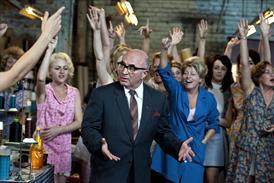Lord Dyson shows zero tolerance for far-reaching reform based on poor evidence gathered with insufficient funding.
In rejecting the Civil Justice Council costs committee’s recommendations for reform of the guideline hourly rates, Lord Dyson showed zero tolerance for far-reaching reform based on poor evidence gathered with little funding.
His praise for the committee’s ‘sterling work’ is not sarcasm. Indeed many members of the committee would have shared Dyson’s disquiet at using a data set that included just one piece of bespoke research – a non-randomised survey eliciting only 148 replies.
More than £80,000 will need to be found to conduct a proper survey. But a read of the CJC committee’s report shows that if such discussions take place, the challenges that will need to be addressed in them go further than the evidential base.
Not least, the report shows that the remit the CJC was set might yet be used in conjunction with a new, more reliable data set – which might then see the resurrection of the recommendations Mr Justice Foskett’s committee reached.
To recap, the rates were frozen in 2010. The CJC's recommendations would have seen rates fall overall by 5%.
There would have been changes to rates for all grades of fee-earners, and some geographical areas. Boundaries affecting the guideline rates would have been changed for London, where ‘City’ was set to be subsumed into a new inner-London category. The ‘national’ categories would have been simplified.
The headline reduction, of course, masked a huge divergence in the way that practices would have been affected – this was to be bad news for firms who rely on large numbers of paralegals, whereas firms that have a higher proportion of 8-plus years’ PQE lawyers could have benefitted.
Firms in cities and towns outside of London lost due to their location, and rural firms gained.
Some lawyers will reflect that such recommendations seem unfair or even arbitrary. To explain the recommendations, it’s worth revisiting not just the narrow remit the committee worked to, but also the origin of the way the rates were set.
When the guideline rates as we know them were framed over two decades ago, they were mostly set by two broad criteria. The primary determinant was a fairly straight calculation – taking the amount lawyers report they earn and dividing it by the hours they report they worked.
The second determinant was geography – the rates recognise that practising in different locations involves different costs. London has ‘City’, ‘Central’ and ‘Outlying’. A category called ‘National 1’ covers major cities and legal centres. ‘National 2’ includes ‘other cities’ and the outlying areas of major legal centres. ‘National 3’, smaller cities, towns and rural areas.
Other considerations were intended to reflect a reasonable expectation of making a profit, and the cost of meeting some overheads. Originally it gave firms an overall a profit margin of around a third.
Fast-forward to 2008, and the profound repercussions of the financial crisis for the economy. As master of the rolls at the time, Lord Neuberger’s attitude was that the guideline rates could not remain insensible to the problems of the wider economy. Slight increases were allowed before the rates were frozen in 2010.
But that was never a satisfactory response, and after the Jackson reforms came in to effect last April, Dyson commissioned the CJC to undertake an ‘evidence-based review’.
The effect of any change goes far beyond the area of summary judgment of costs, as the rates have become the accepted default figures for costs calculations.
That the CJC review was completed on such a small budget seemed to horrify Dyson. It had implications for its use of evidence. Its members therefore sought available evidence before commissioning anything extra.
The available data (firm-wide, rather than litigation-specific) is very good for some parts of the legal market – and incomplete for others. PwC’s survey of the top-100 law firms is reliable and respected, though the committee was not given access to its underlying data.
The Law Society’s Law Management Section’s annual financial benchmarking survey was used to form a picture of further firms – most reliably within the five-25 partner range. In this case, the unpublished underlying data on 165 firms was made available to the committee and its advisers. Together with the PC holders’ survey, the committee relied on this as the ‘most helpful’ data set.
A full survey to fill in the gaps to the satisfaction of the committee’s members and its academic advisers was beyond the means the committee had available – the cost would have been somewhere north of £80,000. However at conferences and through the Law Society’s professional update email, Foskett promoted a survey that would have filled in some of the gaps.
This survey generated only 148 replies – a disappointing result given the profession’s interest in the outcome. The reply rate, for example, contrasts with the interest in a Gazette news story on guideline hourly rates – shared in 114 Tweets and 123 LinkedIn updates.
Excluded, by necessity, was any measure of the effect of changes to the portal limit. The data also deals inadequately with fixed-fee work.
Still, the findings were broadly consistent across the study on comparable findings such as those relating to overheads. The two academic economists working for the committee, Paul Fenn and Neil Rickman, based their calculations on a synthesis of these pieces of data.
Leave aside strong concern over the data sample used, and you will notice a feature of this process that created problems for some categories of lawyer. Essentially the longer the hours a grade of lawyer, paralegal or secretary works, the lower the hourly rate for that group. Firms struggling with profitability and cutting overheads will also tend to depress the rate.
The grades in the CJC report were to have reflected the increased use of paralegals and trainees, who are also working longer hours.
Grouped with secretaries under grade D, in the report they became the new grade E. So whereas grades A-C would have seen, on average, a reduction of 2.23% under the new rates, grades A-E were looking at a 5% fall. More experienced solicitors – eight-plus years’ PQE – were in the best position.
Grade As were recommended a rise – of 9%-18% - in all areas other than the City. The new grade E as a group were looking at a fall of between 13.45% and 36.13%.
The map of London was to be redrawn – in part reflecting the presence of ‘City’ firms in places such as Canary Wharf and SE1. The category recommended was ‘inner London’ and ‘outer London’. The recommendation for areas outside London was for a single national rate – to the benefit of rural practices, but the detriment of provincial city practices.
Dyson was dead right to criticise the, by turns, poor or inappropriate data the CJC’s committee had to rely on. And some of these figures might change with a dramatically improved evidential base.
But it may also be worth revisiting the costs formula that the data is fed into – a position where the effect of working harder is to reduce an hourly rate will strike some as odd. Likewise, in the current climate any formula that is based on the aggregate figures of both viable and unviable firms will not produce an average that looks in any way satisfactory.
Eduardo Reyes is Gazette features editor































8 Readers' comments